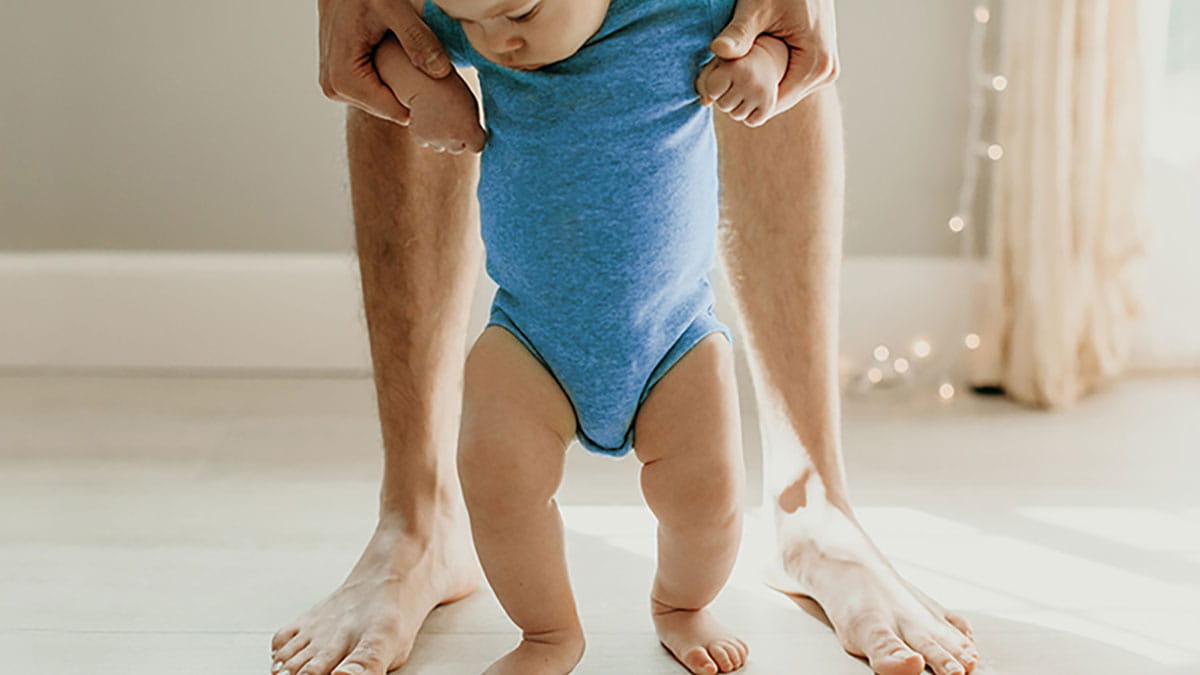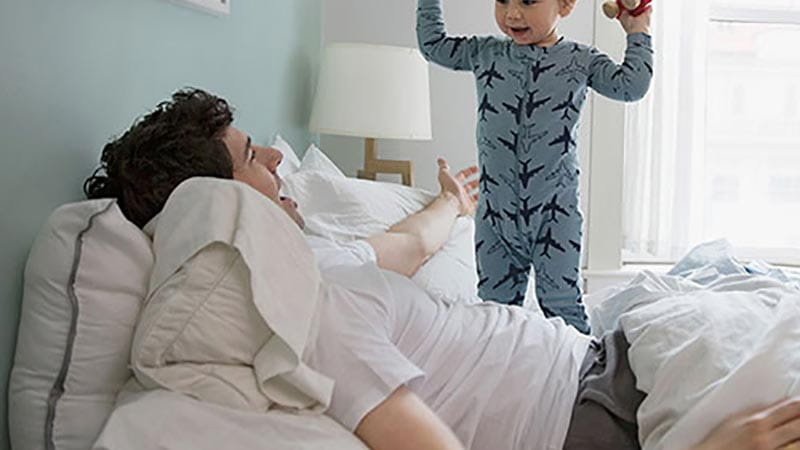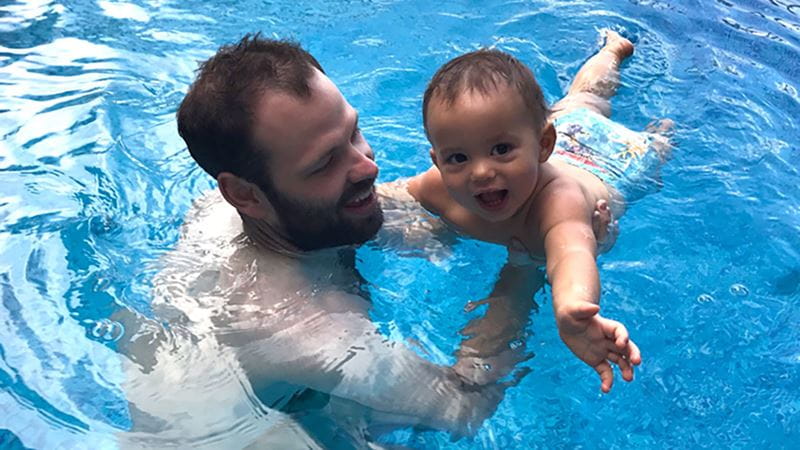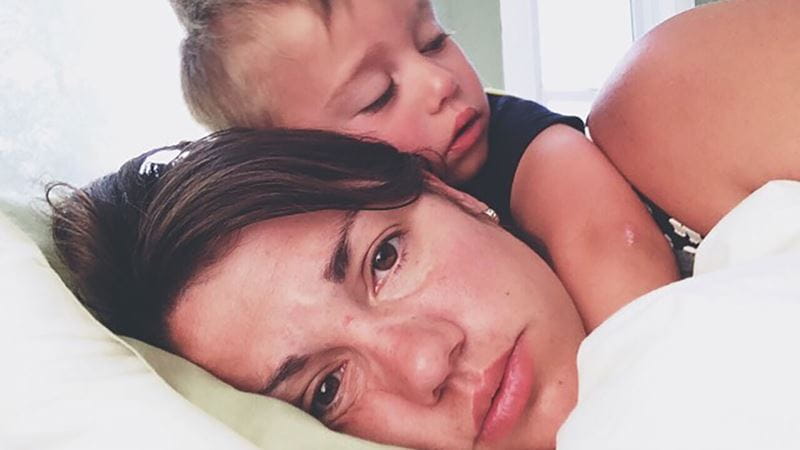Blog article
The different stages of learning to walk

This blog originally appeared on Direct Advice 4 Dads, powered by HBF.
Watching your kid learning to walk is one of the best parts of being a dad. It’s also freakin’ hilarious.
When my son first tried to waddle a few steps, I had a moment’s thought that I should probably push him over, because his mum wasn’t there to watch.
Fortunately our second child made up for it – she took her first steps into the outstretched arms of her beloved big brother, with both mum and I watching.
In terms of moments of family ecstasy, only arriving at the gates of Disneyland together has ever come close to being filled with so many toothy grins.
But each absurdly wobbly step for the first couple of months is a source of both joy and fear.
You also never know when they’ll faceplant, because toddlers are so hilariously bad at walking for so long. And you’ll marvel at the sheer stupidity of a species that is born without the inherent knowledge that, if you fall forward, you should put your hands out to protect you.
How we humans have survived in the face of this stupidity is a genuine mystery of the universe.
Then, as they get bigger – and slightly more coordinated than a tranquilised elephant – they fall less and you get to start toddling middling distances with them. There’s this magical phase where they can walk, and want to, but only if you’re holding their hand.
It’s a beautiful bonding moment when a tiny, taut hand disappears into your enormous one, and holds on like life depends on it.
Once they let go and run off, swaying side to side like that tranqued elephant coming out the other side, it’s a big moment – they’re letting go of you and they’ll never need you quite as much again.
Your little burping, gurgling and farting baby ain’t a baby no more.
But before that, stages. So many stages. Don’t waste time checking websites to make sure your kid is meeting each one on a schedule (yes, we realise the irony in our stage-by-stage rundown below), because it really doesn’t matter. The longer it takes, the longer you get to enjoy it.
You may never laugh this much ever again.
Pre-Baby steps
When a baby is just a few weeks old you can hold them up and they’ll push their legs down against any hard surface. No, you have not fathered a genius who’s going to start playing the piano at age one. This is a simple, natural reflex – and the babe’s legs are about as likely to hold them up as yours are to outrun a gazelle. Or a lion.
From about the five-month-old stage, you’ll be able to balance your baby standing up on your thighs and they’ll bounce up and down, looking like they’ve just won the lottery.
You really will need to keep hold of their hands or hips at this stage – their legs can take their weight, but a five-month-old cannot balance.
This bouncing helps the little leg muscles to grow though, and will become a favourite playtime activity you can do together, while babe gets on with fun things they can do themselves like rolling over, sitting up (again, not as easy as you’d think) and then crawling.
Crawling is a bucket of laughs to watch as well, particularly in the early stages when they get stuck in reverse and propel themselves around the house butt-first.
They’ll get the hang of it pretty soon and realise that forward is the way to go. Again, prepare for face-plants aplenty at this stage – if you’ve got tiled or hardwood floors in your house, spend a few bob on a decent rug to help cushion the blow.
For some reason, some children go straight from sitting – or a weird kind of anti-crawl bum-dragging manoeuvre, to standing and walking.
It doesn’t mean there’s anything wrong with your kid, nor that you’ve given birth to a super human, it’s just a thing some babies do. They don’t care about the phrase “don’t try to walk before you can crawl”.
Stairs are a whole new discovery. For some reason babies look at stairs the same way you used to look at an open bar at a wedding – a bit of excitement, a touch of fear about whether you’re up to this task, and a quick decision to throw caution to the wind and dive in headlong.
I’m not advocating hovering over your child 24 hours a day, but think of the last time you were at an open bar (pre-baby) – how well did that turn out? Babies and stairs aren’t a great mix. Baby gates are your friend.
Eight to 12 months – ish
At roughly the eight-month mark (not the day they turn eight months old, it doesn’t work like that), your baby will start trying to stand with the aid of furniture. Truly, our modern children have so many softly upholstered advantages over our primate ancestors.
The next stage, after they learn to stand on legs that look like they’re made of slinky toys filled with jelly, is called ‘cruising’, which isn’t nearly as adult as it sounds.
From a distance it might look like actual walking, but it’s just their way of learning what is obviously quite a complex activity. It’s basically ‘cheat’ walking, holding onto things and tottering around them – that thing you do leaning on the edges of a pool table after a few too many.



